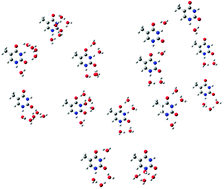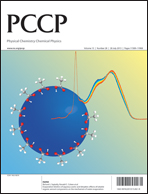This theoretical study provides the physically reasonable structures of the microhydrated thymine clusters, from the mono- to the penta-hydrated species, by the exploration of their B3LYP and B3LYP-D potential energy surfaces using a global search algorithm of minima (GSAM). The anharmonic vibrational computations of the isolated and aqueous thymine are also reported. They were performed from B3LYP and B3LYP-D potential electronic surfaces followed by a second order perturbative treatment of the anharmonicity. On that point, the computational strategy to properly take into account the effect of the polar protic solvent consists in considering a micro-hydrated thymine cluster [T,nH2O] surrounded by a polarizable continuum model (PCM). The number of solvent molecules was chosen in such a way that the micro-hydrated cluster presents only one dominant stable conformer at 298 K. All the VPT2 fundamental transitions obtained from the B3LYP and B3LYP-D quartic force fields are reported for the isolated form ([T,0H2O]) and for the aqueous form ([T,nH2O + PCM]). The theoretical results are compared to the available experimental data, which are for some of them reassigned, in order to assess the reliability of the B3LYP and B3LYP-D methods for the anharmonic treatment of such organic species in a polar protic solvent.

You have access to this article
 Please wait while we load your content...
Something went wrong. Try again?
Please wait while we load your content...
Something went wrong. Try again?


 Please wait while we load your content...
Please wait while we load your content...